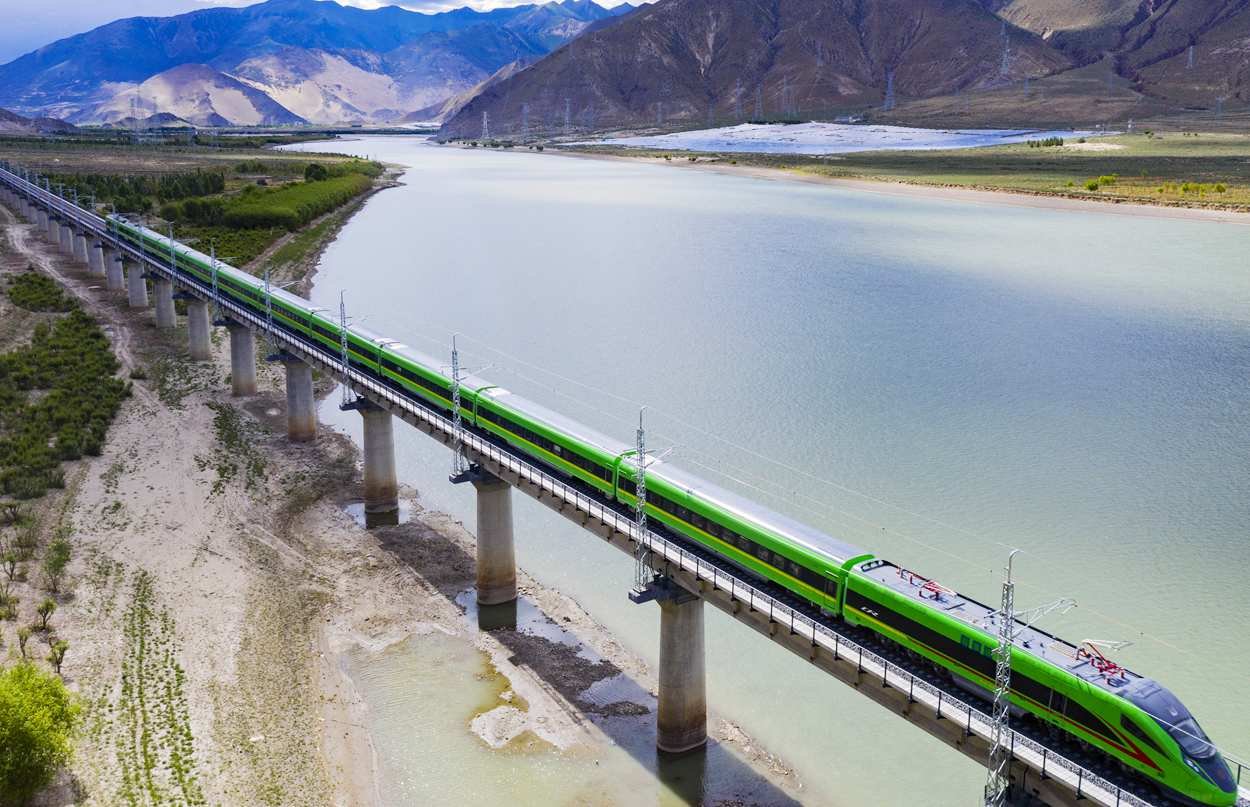A New Era of Connectivity
The announcement of the extension of the railway from Xigaze to Kyirong County, marking a stretch of 540 kilometers towards the Nepal border, heralds a significant leap in the connectivity between Nepal and China. This ambitious project, set to unfold over the next five years, promises to be a cornerstone in promoting trade and enhancing road and air traffic flow between the two nations. As a vital link between China and South Asia, Nepal stands to gain immensely from improved logistical and transportation networks.
The Vision Behind the Rail
The primary aim of this railway project is to foster trade by providing a robust alternative to the existing road and air transport options. The significance of this rail link is further highlighted by the fact that a considerable portion of the trade between Nepal and China currently passes through Tibet. This new rail connection is expected to streamline and possibly increase the trade volumes between the two countries by offering a more reliable and efficient mode of transport.
Speed Meets Strategy
While the Tibet railway might not feature the high speeds of a bullet train, the pace at which the railway tracks are being laid is nothing short of remarkable. The target to reach the Nepal border in Rasuwa by 2020 emphasizes the strategic importance and the urgency of this project. On the Nepal side, there is a keen interest in upgrading existing infrastructure to complement this new rail link. The government’s plans to enhance the highway network and establish a dry port are indicative of the broader vision to leverage the railway for national development.
From Golmud to Kyirung: A Journey of Progress
China’s efforts to extend the world’s highest railway line have already seen remarkable milestones, with the track reaching from Golmud to Lhasa and then Shigatse. The next phase, bringing the railway down to Kyirung—merely 25 km north of the Rasuwa Gadi border—underscores the ambitious engineering and logistical feats involved in this project. A recent demonstration of this growing connectivity was a freight train journey from Lanzhou in central China to Xigaze, carrying 86 containers bound for Nepal. This successful operation showcases the potential for seamless transport of goods, further bridging the distances between Nepal and China.
Conclusion: A Future of Opportunities
The Nepal-Tibet railway project is not just about laying tracks; it’s about creating a conduit for trade, tourism, and economic growth. As the project progresses, it is expected to unlock new opportunities for businesses and foster a closer relationship between Nepal and China. The anticipation of improved road and rail connections promises a future where geographical boundaries are less of a barrier to the movement of people and goods, paving the way for a more interconnected and prosperous region.

Transforming Trade in South Asia: Nepal’s Strategic Dry Port and Railway Initiatives
Nepal’s Proactive Steps Towards Enhanced Trade
In anticipation of the Nepal-Tibet railway reaching the border, Nepal is taking significant strides to boost its trade infrastructure. The construction of a dry port at Timure, just 3 km south of the Nepal-China border, is a pivotal part of these preparations. Recognizing the importance of streamlined trade processes, the Ministry of Commerce and Supplies has established the Inter-Modal Transport Development Board. This initiative is dedicated to building this crucial dry port, aiming to facilitate smoother and more efficient trade operations.
Zhamu Port: A Gateway for South Asia
The strategic positioning of Zhamu port, designated as a customs point, is set to redefine trade dynamics not only for Nepal but for the entire South Asian region. The vision behind this initiative is expansive, with aspirations that, once operational, the train service will enable a faster route for Chinese goods not only to Nepal but also to neighboring countries like India and Bangladesh. This route is seen as a vital shortcut that could significantly reduce the time and cost associated with transporting goods through traditional channels.

A New Era of Trade Connectivity
The current trade route for Chinese goods to Nepal involves a lengthy journey via Kolkata port, which can take up to 35 days. The introduction of the railway and the dry port at Timure promises to revolutionize this, potentially reducing the transit time to just 10 days via Kerung. This dramatic decrease in transportation time highlights the strategic importance of Nepal’s infrastructure developments, positioning the country as a key trade hub in the region.
Nepal’s Vision for Regional Trade
The establishment of the dry port at Timure and the completion of the Nepal-Tibet railway are more than just infrastructural projects; they represent Nepal’s forward-thinking approach to enhancing regional trade. By improving connectivity and reducing transportation times, Nepal is set to play a pivotal role in facilitating more efficient trade routes between China and South Asia. This development not only promises economic benefits for Nepal but also has the potential to contribute to the economic integration and prosperity of the entire South Asian region.

















